COASTLINES



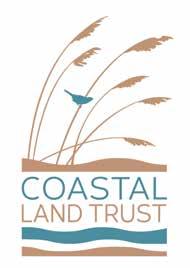
The Waccamaw River is an ecological puzzle of sorts. With its stately cypress trees and often sleepyflowing, tea-colored waters, the river looks a lot like its swampy, blackwater cousins in the coastal plain. But the watershed’s unusual limestone geology and associated neutral water chemistry have given existence to uncommon creatures that live only here. The Waccamaw silverside, Waccamaw darter, and Waccamaw fatmucket mussel live only in Lake Waccamaw, from which the river spills, and at isolated locations in the upper Waccamaw watershed.
The North Carolina Coastal Land Trust has been wild about the Waccamaw watershed—including its wonderful swamps, woodlands and tributaries—since obtaining its first 300-acre conservation easement in 2008. To date, we have conserved more than 4,700 acres along the Waccamaw, including more than 10 miles of riverfront. For organizations like ours, land conservation is yet another kind of puzzle. Even the fitting of seemingly
small parcels can have meaningful impact. The 197 acres we gave to expand Lake Waccamaw State Park provided additional public access to the river. Last summer we purchased a 91-acre tract that tucks nicely into one of our existing preserves.
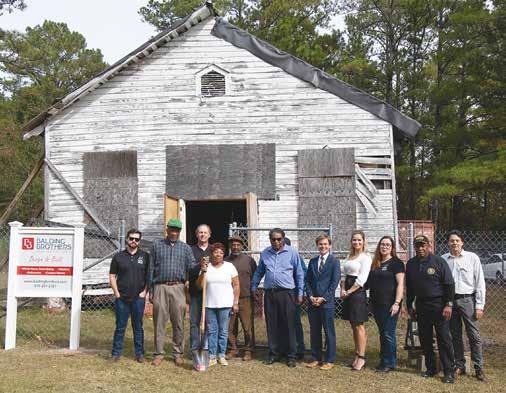
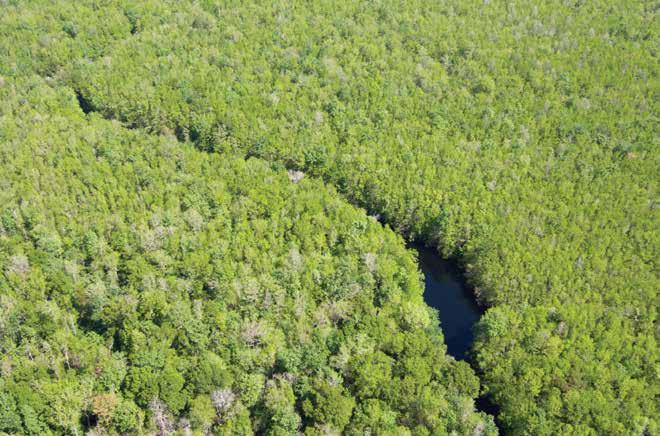
The largest Waccamaw transaction, in 2018, had particular cumulative impact. This nearly 3,000-acre acquisition connects to more than 20,000 acres of existing state game lands and portions
By Stephanie Wert Borrett, Director of Donor RelationsOn a sunny morning in November, neighbors and friends gathered along Cedar Hill Road in Navassa, NC, on the lawn of Reaves Chapel.
This was the day the community had been working toward for years; today the restoration of Reaves Chapel began.
From its inception in the 1860s through the early 2000s, Reaves Chapel served the community as a place of worship, service, faith, and history. Many community members have stories of the chapel central to their memories growing up nearby.
The steeple bell would ring out for miles to mark time (especially, remembers Jacki Davis, the bell meant “start running” so she wasn’t late to Sunday School!). The bell rang out to mark the birth of a baby or the passing of a neighbor.
George Beatty remembers attending a choral concert at Reaves Chapel and the group sang Didn’t it Rain, a spiritual made famous by Sister Rosetta Tharpe. The choir’s rendition very

Born in Asheville, NC, Kenneth grew up exploring the high elevation creeks of the Southern Appalachian Mountains. On family vacations, he enjoyed exploring the tide pools of the NC coast. He earned a B.S. in Ecology and Field Biology from uNC Asheville in 2014 where he also competed for the university’s D1 soccer program. He built a baseline of academic experience in aquatic ecology, wildlife conservation, and GiS before working field research positions with the National Park Service, uS Forest Service, and then the North Carolina Wildlife Resources Commission (NCWRC). During his time with the NCWRC, he led backcountry field research teams dedicated to studying and mapping the distribution of native fish species in WNC and was selected for the Technician of the Year award in 2018. He joined the Coastal Land Trust team in January of 2022.
Kenneth always felt drawn to the coastal landscape and is excited for the opportunity to bring his skills and
experience to the Coastal Land Trust team and to the conservation of wild places in the region. in his free time he enjoys canoeing, hiking, and camping with his girlfriend and their dog, as well as the occasional soccer game just for fun.
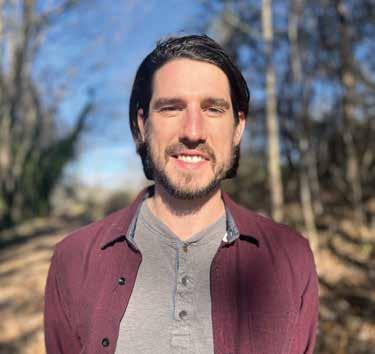




After seeing a video of Hutaff Island

BOAT: 16-24’, open center console or similar layout
CAmERA: Digital DLSR or mirrorless
“The
Land Trust is a blessing to the State of North Carolina and the whole United States with the lands you have conserved.”
Lars Simonsen, attorney Edenton
The Coastal Land Trust has purchased 766 acres of floodplain forest in Bertie and Hertford Counties, near the Town of Colerain. With 3 miles along the Chowan River and more than 7 miles of Keel Creek, this expansive forest will help store floodwaters and reduce flooding, enhance water quality, and protect habitat for fish and wildlife.
The newly-protected forest contains the heart of Cow island Swamp, a site identified as “ecologically significant” by the North Carolina Natural Heritage Program. This designation is due to the age and expanse of the mature bald cypress and tupelo gum forest, with many trees more than 100 years old. The Chowan River itself has been classified as a highly ecologically significant aquatic site due to the presence of several rare fish, mollusk, and crayfish species.
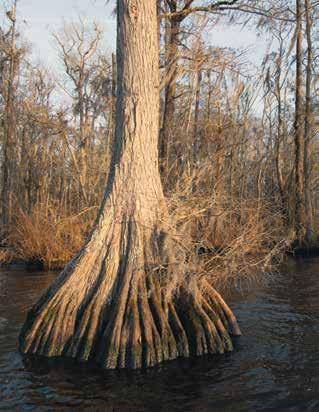
The tract provides important nursery areas for anadromous fish such as striped bass, American and hickory shad, and possibly Shortnose and Atlantic sturgeon (federally endangered species), along with habitat for rare mussel species and rare crayfish. it is equally important for birds such as Osprey, Bald Eagle, Wood Duck, Barred Owl, Prothonotary Warbler, and Swainson’s Warbler. The forested wetlands along the Chowan River from Colerain to Parkers Ferry, including this newly-protected tract, have been identified as an important Bird Area by the National Audubon Society.
“This purchase conserves almost all of Keel Creek, from its mouth at the Chowan River to its headwaters,” said Janice Allen, the Coastal Land Trust’s Director of Land Protection.
Dr. Stan Riggs, coastal geologist and

Coastal Land Truct has
Distinguished Research Professor at East Carolina university, and now a Coastal Land Trust Board member, agrees. Dr. Riggs adds, “Keel Creek is remote, wild, and brimming with an incredible abundance and diversity of fauna and flora; a great natural treasure within North Carolina’s awesome coastal system.”
The Chowan River and its tributaries, such as Keel Creek, are important to the fisheries, wildlife and scenic beauty of the North Carolina coast. The Coastal Land Trust’s Chowan River initiative has protected more than 4,000 acres within the river basin.
“Stay tuned for more land conservation along the Chowan River near Colerain as we have several other projects lining up,” said Janice Allen, Director of Land Protection.
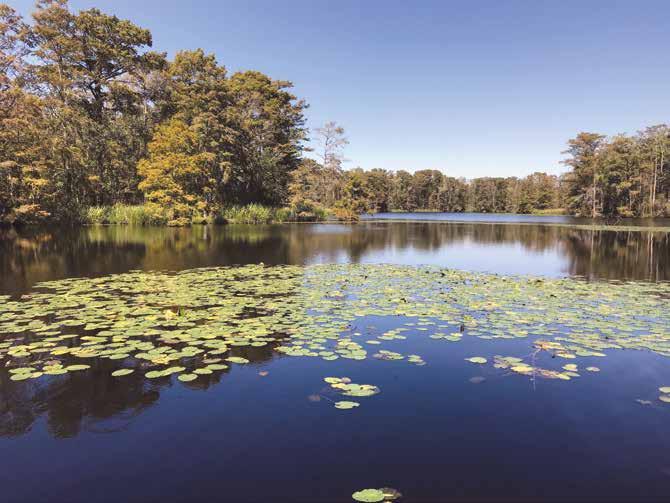
My connection to the Coastal Land Trust and Springer’s Point is through my brother, Jim Stephenson. Jim was an environmental policy analyst who lobbied for causes in Raleigh. He was visiting Springer’s Point on Ocracoke island with his wife, Sally Anger, in 2009, and declared that the Coastal Land Trust had done such a great job that he wanted to find a way to provide additional funding for their projects.
Sadly, Jim died of a heart attack later that month. To honor his commitment, my husband Paul and i have donated annually to Springer’s Point. Then it just seemed natural to revise our will to include a bequest to the Coastal Land Trust.
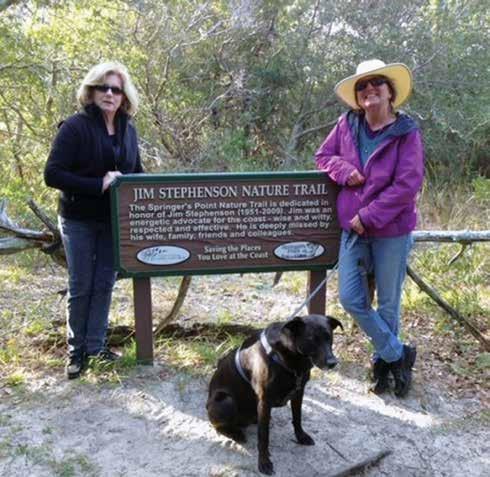
My own environmental connection was as a former teacher in Maryland advocating for the environment by creating curriculum, writing grants, and conducting workshops. So when your heart aligns with the mission of the Coastal Land Trust and you can actually see the results made by donations, it’s easy to make the decision to create a personal bequest plan.
Just visit any of the lands they protect. Your heart should speak to you about how important the beautiful coastal properties are for the future.
from page 2
Answer: C, The Osprey, also referred to as a sea hawk, is the second most widely distributed raptor species in the world after the Peregrine Falcon. it winters on every continent except Antarctica and breeds on every continent except Antarctica and South America. The Osprey’s scientific name, Pandion haliaetus, comes from a mythical king of Athens, Pandion, whose daughters were turned into birds, and the Greek words, halos (sea) and aetos (eagle).
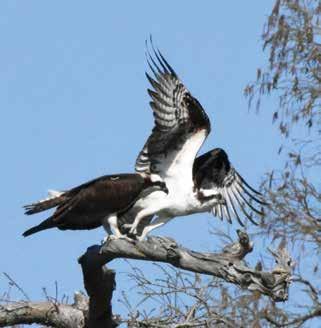

ANOThER WAy TO PROTECT LAND: CRyPTOCuRRENCy
Donate to the Coastal Land Trust with cryptocurrency, safely, securely, online here: CoastalLandTrust.org/ donate-crypto
April 11-16
Pollinator Palooza! NC Science Festival event
Educational videos posted online daily 1115 and a live demo April 16th CoastalLandTrust.org/palooza22
Friday, may 27 4-7pm
Springer’s Point 15th (+1) Birthday Celebration Berkley Barn, Ocracoke
Saturday, June 4
Flytrap Frolic
Pre-booked guided garden tours and carnivorous plant activities Stanley Rehder Garden, Wilmington
Saturday, September 24 4-7pm Annual Celebration –30th Anniversary Old Town, Brunswick County Note: 30th Anniversary Celebrations will also be held in Mid-Coast and Northeast NC in 2023
monday, October 17
20th Annual holt CStore golf Tournament
Country Club of Landfall, Wilmington
Thursday, November 10 6-9pm gather in the garden
Live music, connect with conservationminded friends
Wrightsville Beach Brewery Beer Garden, featuring our “Beer of the Month”
of The Nature Conservancy’s 17,424-acre Green Swamp Preserve in Brunswick County—creating one of the largest conservation corridors in the state.
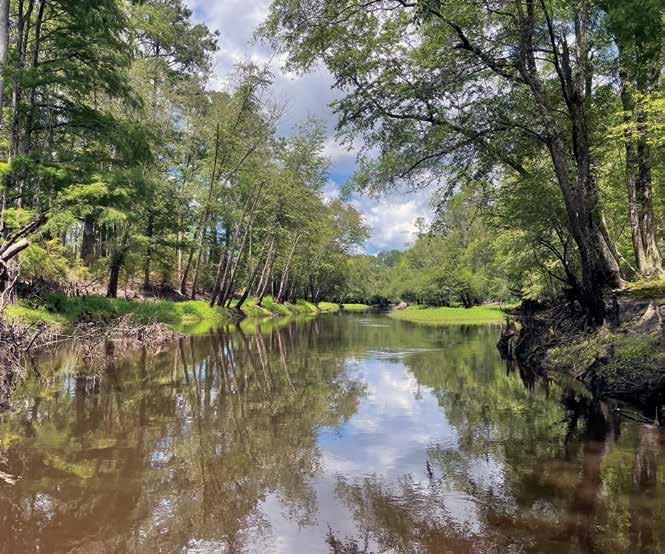
A nature-lover’s paradise, the Waccamaw River stretches 140 miles from its headwaters at Lake Waccamaw to Winyah Bay in South Carolina. in North Carolina, American Rivers designated the entire Waccamaw a “Blue Trail” to promote water recreation and encourage conservation. The Waccamaw’s accolades as a place of scenic beauty and diverse flora and fauna have made it a darling of paddlers, birders, hunters, and hikers.
Overall water quality is considered good in the watershed, but it has not lacked threats from surrounding land use. indeed, it was illegal dumping of hog waste into the river in 2007 that set into motion the Coastal Land Trust’s acquisitions in the Waccamaw watershed. Payment of Clean Water Act fines connected to the discharge helped the Coastal Land Trust with initial funding that was leveraged with grants and private funding for significant land acquisitions.
“There is still much work to do,” says Janice Allen, Director of Land Protection, adding that continuing to protect water quality and increasing climate resiliency throughout the coastal region will ultimately involve acquisition and restoration of degraded lands as well as attention to unspoiled natural areas. Historic ditching and draining has caused flooding and pollution issues in many areas. “it’s quite a Herculean task to raise funds for intact natural areas, much less to purchase degraded lands for restoration.”
individual donors and our valuable network of partnerships ensure that we
can leverage every possible resource to the best use. Since 1992, we have protected more than 84,000 acres in the coastal plain. Land trusts across the nation have protected more than 37 million acres of land, according to the National Land Trust Census.
Explore the Waccamaw watershed via Lake Waccamaw State Park at www.ncparks.gov/ lake-waccamaw-state-park/home. Find a paddling map with access points for the Waccamaw River Blue Trail at bit.ly/34miuGb. Go to CoastalLandTrust.org/ places-to-visit/ to see all our public preserves.
Continued from page 1
nearly brought down the house…but Reaves Chapel stood standing for many more decades.
Jacki describes her grandmother, who served as Pastor, sitting on the stoop declaring “not going to close these doors just yet!” for many years, though the building had begun to decline.
The doors did eventually close, but the Chapel stood for many years through strong storms and wicked winds. But it was time to take action if the historic structure were to survive.
Community members formed the Cedar Hill West Bank Heritage Foundation to restore Reaves Chapel, preserve its history, raise up its significance for future generations, and function as a community space once again. Partnering
Land trusts are in the business not just of conserving lands, but of conserving the human values those lands embody. We protect natural areas and open space because they stand for some of our most dearly held values.
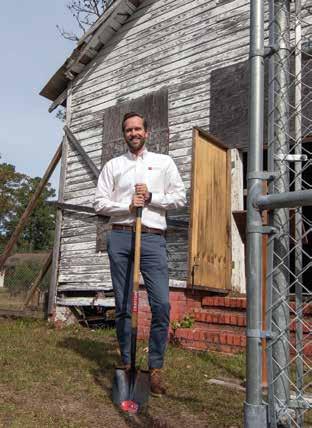
with the NC Coastal Land Trust, funds to purchase the building and stabilize the structure were secured in 2019 from The Orton Foundation, Historic Wilmington Foundation, and many generous individuals.
Now, this “heart project” – with people at the center – begins the next phase. After a blessing and a moment of silence honoring those present and those missing, the first shovel-full of hallowed ground was turned over, and the restoration phase officially began.
But before ground was broken, silence was broken by the bell ringing out once more, to mark the momentous occasion. The next time the community hears that bell, the doors to the restored Reaves Chapel will be open and the gathering space will once again be filled with people celebrating community, service, faith and history.
in late 1973, i explored a 25-acre wooded tract of land on the northeast side of Roanoke island, NC. Located at the north end of a range of wooded sand hills, the land included the tallest hill on the island. Climbing that peak presented me with a view of the Currituck Sound Bridge some 18 miles distant. A u.S. Coast and Geodetic survey marker was positioned at this highest elevation of Roanoke island.
Many parts of this range had been leveled in the past and the sand mined over the years. Most notably the area on the far north had been leveled and substantially mined during construction of the William B. umstead Memorial Bridge from 19551957.
Walking through the hills and forest i was transfixed by nature and transported into a seemingly ancient forest of red and white oaks, 100-year-old live oaks, dogwoods, holly trees and pines which emerged out of magnificently carved sand dunes. The underbrush was sparse and allowed for walking and viewing throughout.
A covey of wild quail astonished me and small wildlife was abundant. i became enamored with the land which later a biology student discovered was filled with maritime forest species. The uniqueness of the land made me realize it must be preserved, which became my goal.
upon investigating its ownership, i discovered the land was for sale but the price was much more than i could manage. A friend and i finally purchased the tract together and divided it in early 1974. Thanksgiving weekend of 1984 found me finally – and happily – occupying my new residence on the beautiful and special property.
Thomas L. White, Jr.The Coastal Land Trust is pleased to have worked with Tom to permanently protect this exceptional property with a conservation easement.
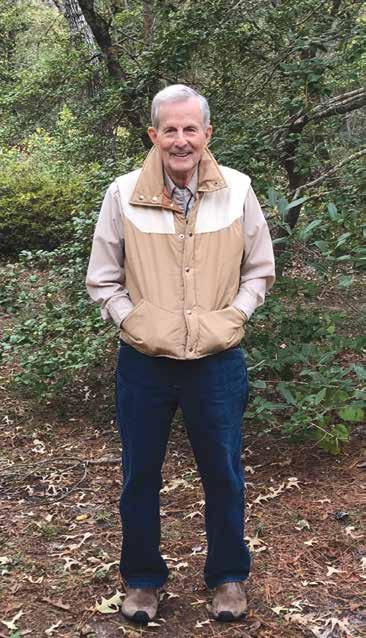
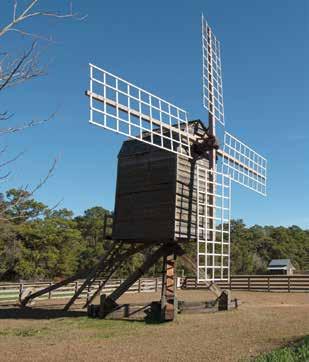
Island Farm – The Outer Banks
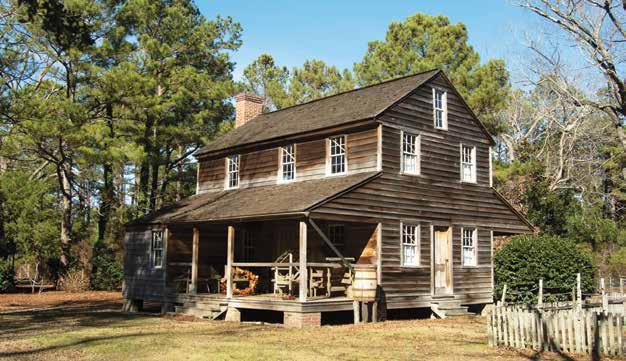
island Farm, a living history site interpreting daily life on Roanoke island in the mid-1800s, is now permanently conserved with a conservation easement donated by Outer Banks Conservationists, inc. to the Coastal Land Trust. The property, owned by Outer Banks Conservationists, inc., features the homestead and farmstead of the Etheridge Family, who settled on Roanoke island in the 1700s.
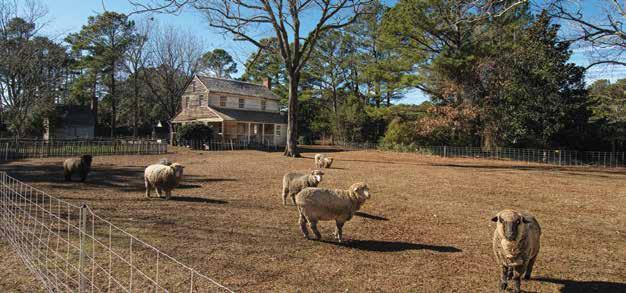
Photos of pre-and post-eradication efforts of Chinese Wisteria (Wisteria sinensis) at island Creek. The property is adjacent to a portion of the Croatan National Forest located to the southwest of New Bern. This invasive species, introduced as an ornamental plant, forms heavy, dense thickets that can kill native trees, displaces native vegetation, and can alter native plant communities.
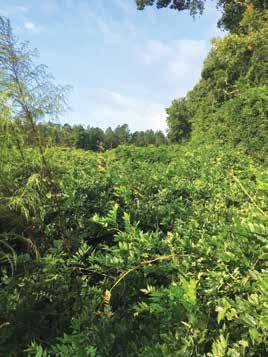
Wright-McKinley
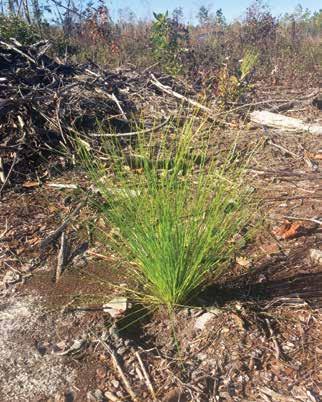
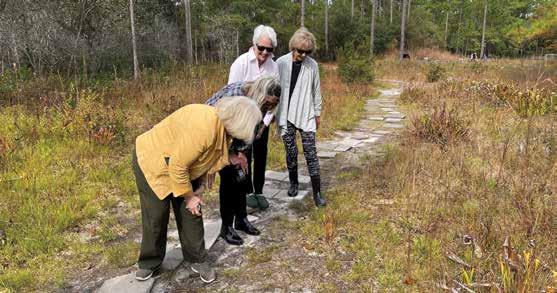
Forestry completed a prescribed burn on approximately 30 acres of the Coastal Land Trust’s Anderson Creek/ Magnolia Preserve in January. Prescribed fire is one of the best forest management tools for increasing species diversity, enhancing wildlife habitat, encouraging natural regeneration, and ensuring healthy longleaf pine forests.
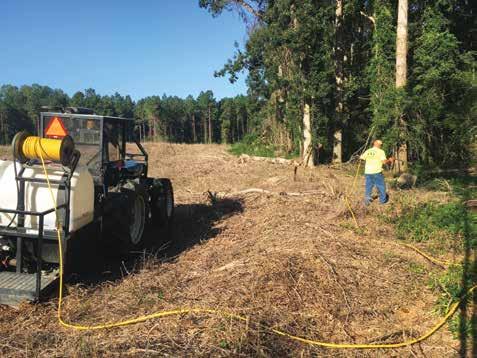
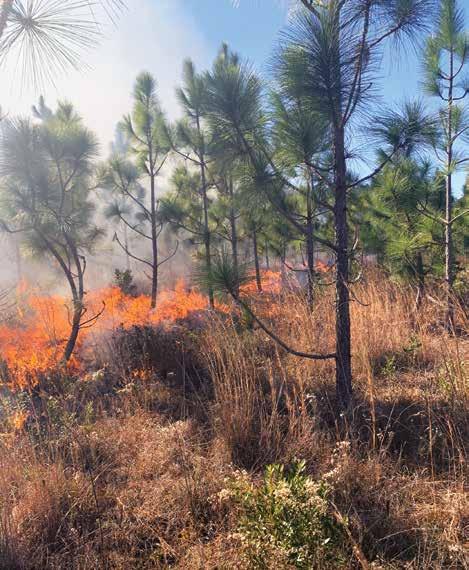
Members
A; Gentian, also known as pine barrens gentian.




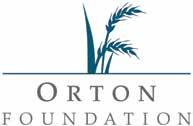













































• Craven 86 Tract: 355 acres of loblolly pine, longleaf pine, and pocosin in Craven County is near the Croatan National Forest. This tract connects to a similar tract of 568 acres CLT acquired in 2020 together creating the 923-acre Bern Preserve.
• Dollison’s Swamp: 1,048 acres in the heart of Dollison’s Swamp in Brunswick County. This magnificent, old-growth bottomland forest protects habitat for a great diversity of wildlife, from anadromous fish to birds and rare, threatened bats. it adds to more than 20,000 acres already protected by the Coastal Land Trust along the lower Cape Fear River.
• Hutaff island: 1,212 acres which included the largest unprotected barrier island along the North Carolina coast. With 2.5 miles of pristine beach and dunes, and rich, productive saltmarsh, it is a haven for nesting sea turtles, seabirds and shorebirds. The outstanding resource waters provide
primary nursery area for diverse fisheries; and the island serves as a first line of defense against storms for local communities.
• Springer’s Point: conservation of almost nine acres along Old Slough on Ocracoke island ensures that Springer’s Point is now fully protected. This is wonderful news for all those who enjoy the peace and serenity of the 132-acre preserve and its intriguing local history. We are already working on new trails and other amenities for everyone to enjoy and explore this special place.
• Waccamaw River: 91 acres along Gum Branch, a tributary of the Waccamaw River, is adjacent to 3,000 acres previously acquired and protected by the Coastal Land Trust, and will help to protect the overall integrity of the Waccamaw River watershed.
• Brice’s Creek: 105 acres of mixed pine hardwood forest and mature
bottomland forest were saved along Brice’s Creek, a scenic tributary of the Trent River. The property’s natural values are worth protecting on their own, but we have more planned. CLT is partnering with Craven County Parks and Recreation to transfer the 105 acres along with 67 additional acres already owned by CLT to create a wonderful new nature park for all to enjoy.
• Keel Creek: 766 acres of floodplain forest in Bertie and Hertford Counties that effectively protects all of Keel Creek from its mouth at the Chowan River to its headwaters.
• Transferred 182 acres of bottomland hardwoods, pocosin and longleaf pine forest surrounded by the Croatan National Forest in Craven County to the u.S. Forest Service to be managed as part of the Croatan. This property was purchased in 2019 from the Davis Family Limited Partnership.
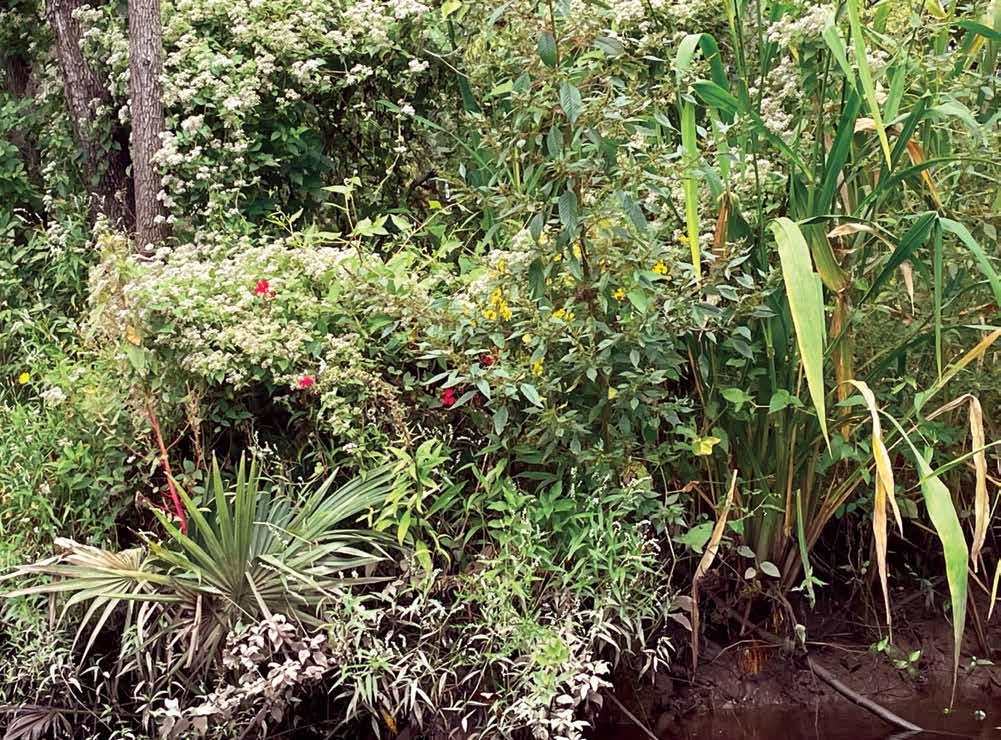
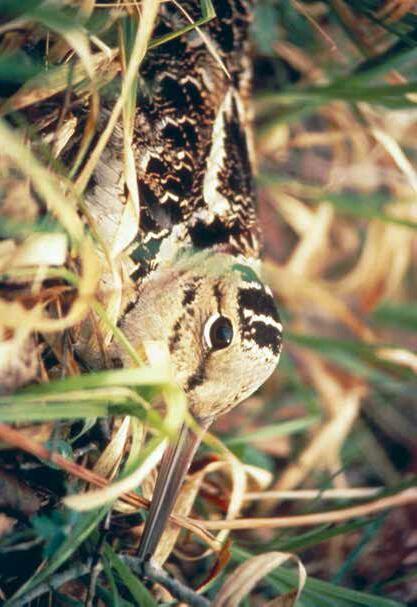
of
Land ProtectionJanice Allen, Director
he really made my day!
enjoying our preserve;
another creature out
me. i was happy to see
but the shy guy eluded
i tried to take a picture
him –amazing little bird.
got very, very close to
revealed a woodcock! i
camp. A closer look
up near the wilderness
along in the leaf litter
was slowly walking
and a chunky little fellow
Carteret County recently
A WOODCOCK m ADE m y D A y
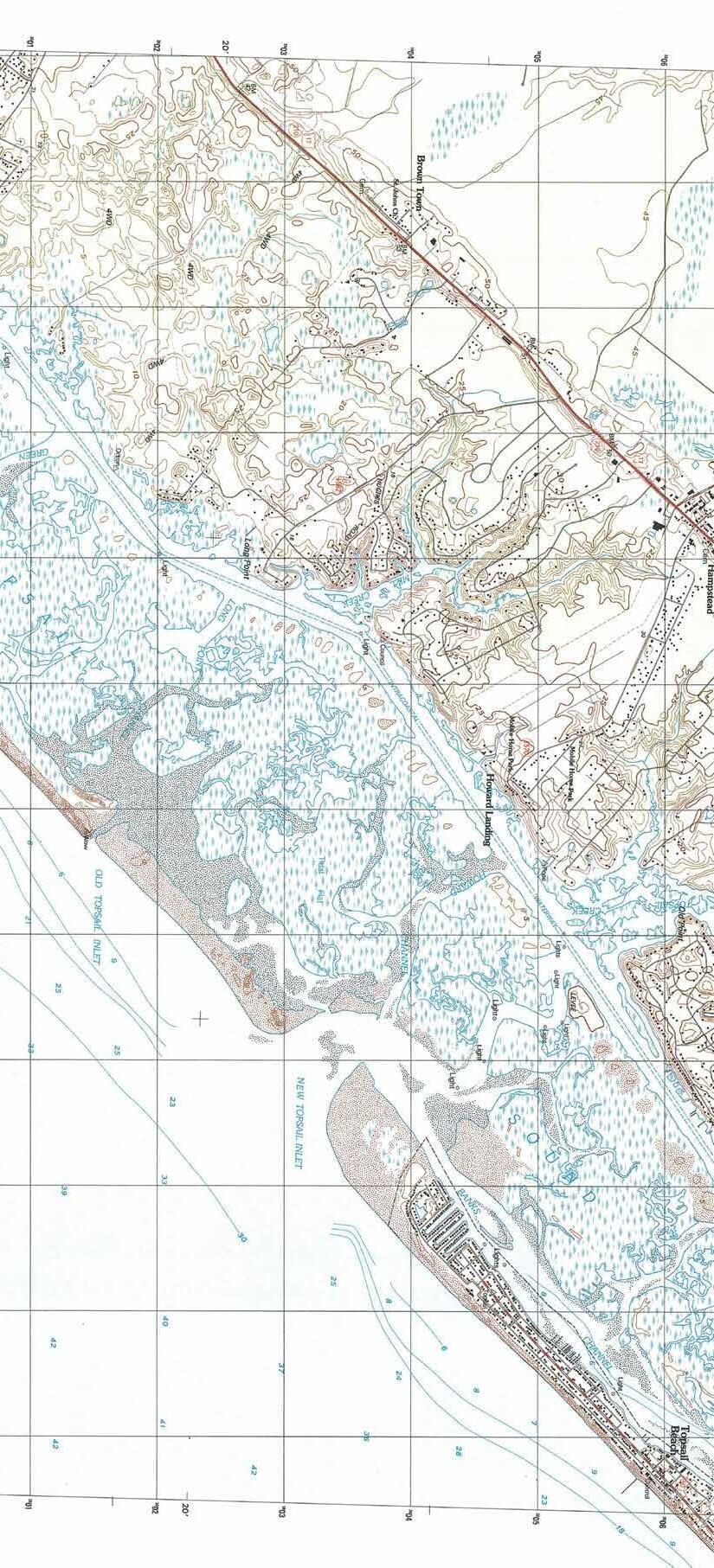
84,120.49 acres of land. CoastalLandTrust.org/give
The Coastal Land Trust has savedWith your help,
Wilmington, North Carolina 28412 VOLUME 22 // ISSUE 1 // Winter 2022
U.S. Postage PAID Permit No. 316 Wilmington, NC
mAKE my DAy!
As i wandered through the Coastal Land Trust’s Bate Tract in Craven County one early morning, an otter slinked across the trail, and i thought how fortunate i was to have seen this sleek and sly creature. it made my day! in fact, i reflected on the fact that these type of sightings and the associated ‘smile moments’ happen to me often in nature. Glimpsing a pair of majestic Swallow-tailed Kites circling over the Waccamaw River, seeing a shimmering red cardinal flower on the marl banks of island Creek, or looking up the bark of an old cypress tree at Dollison’s Swamp (all encounters at Coastal Land Trust’ preserves) really do make my day.
Who says fall doesn’t have great color on the coastal plain?
Can you identify this flower found at Gales Creek Preserve in Carteret County?
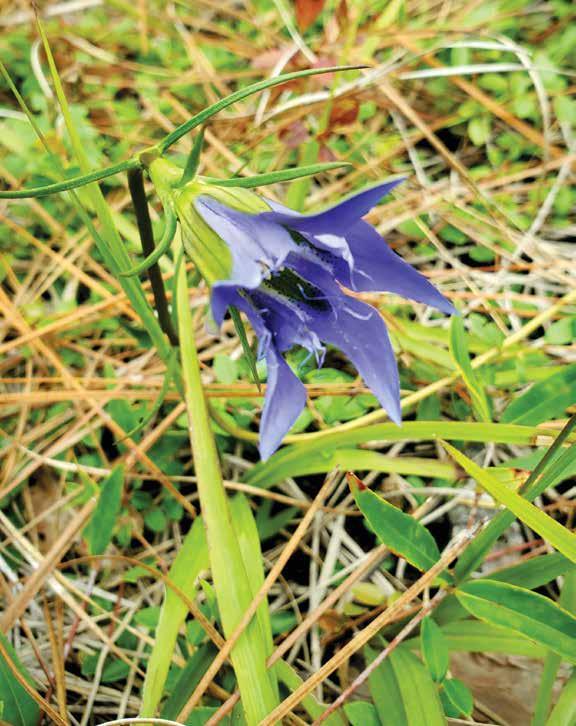
See answer on page 7.
Observation and Photo from Mellissa Dionesotes, Stewardship Biologist
Share something from nature that has made your day with Coastlines. Email photo and statement to: bsteelman@CoastalLandTrust.org
3 Pine Valley Drive COAST LINES CoastalLandTrust.org PAGE 10